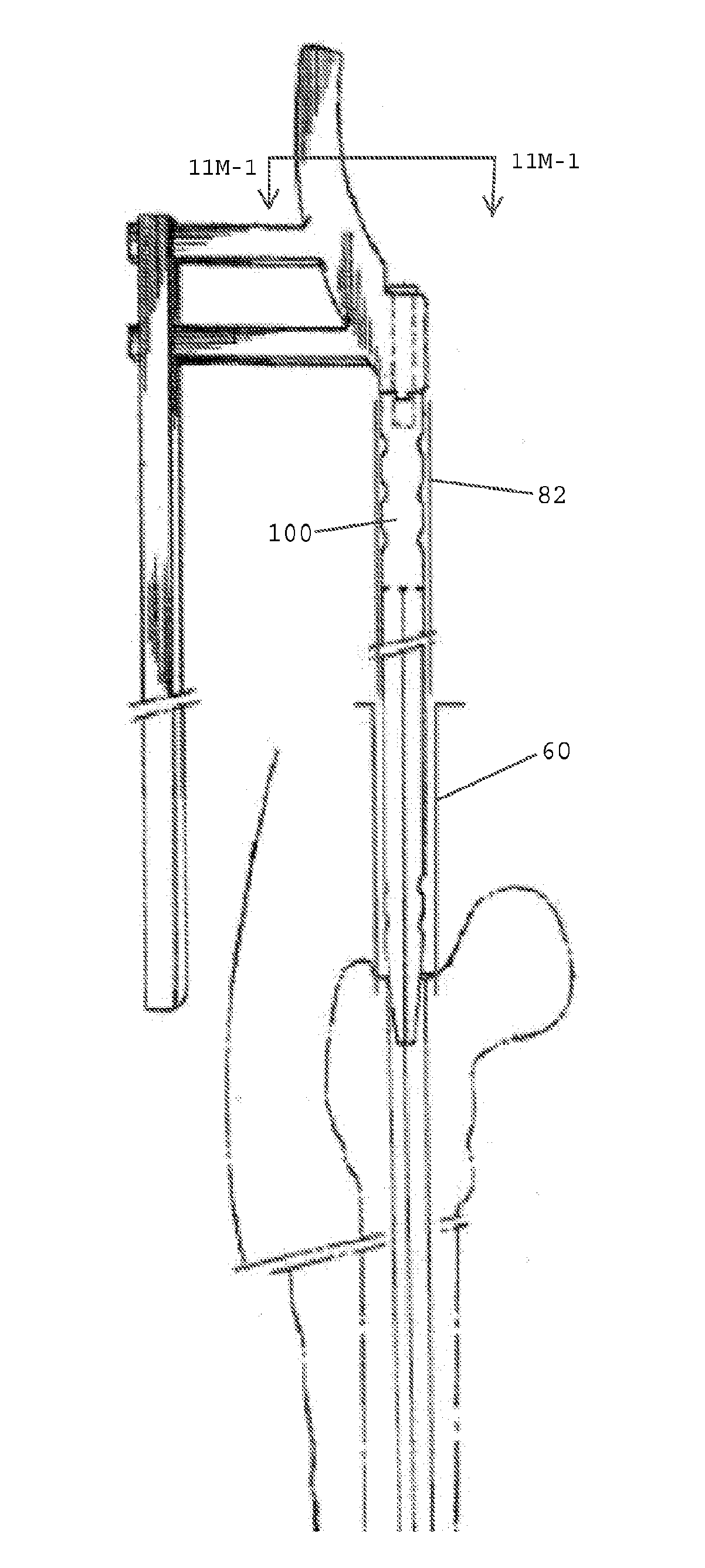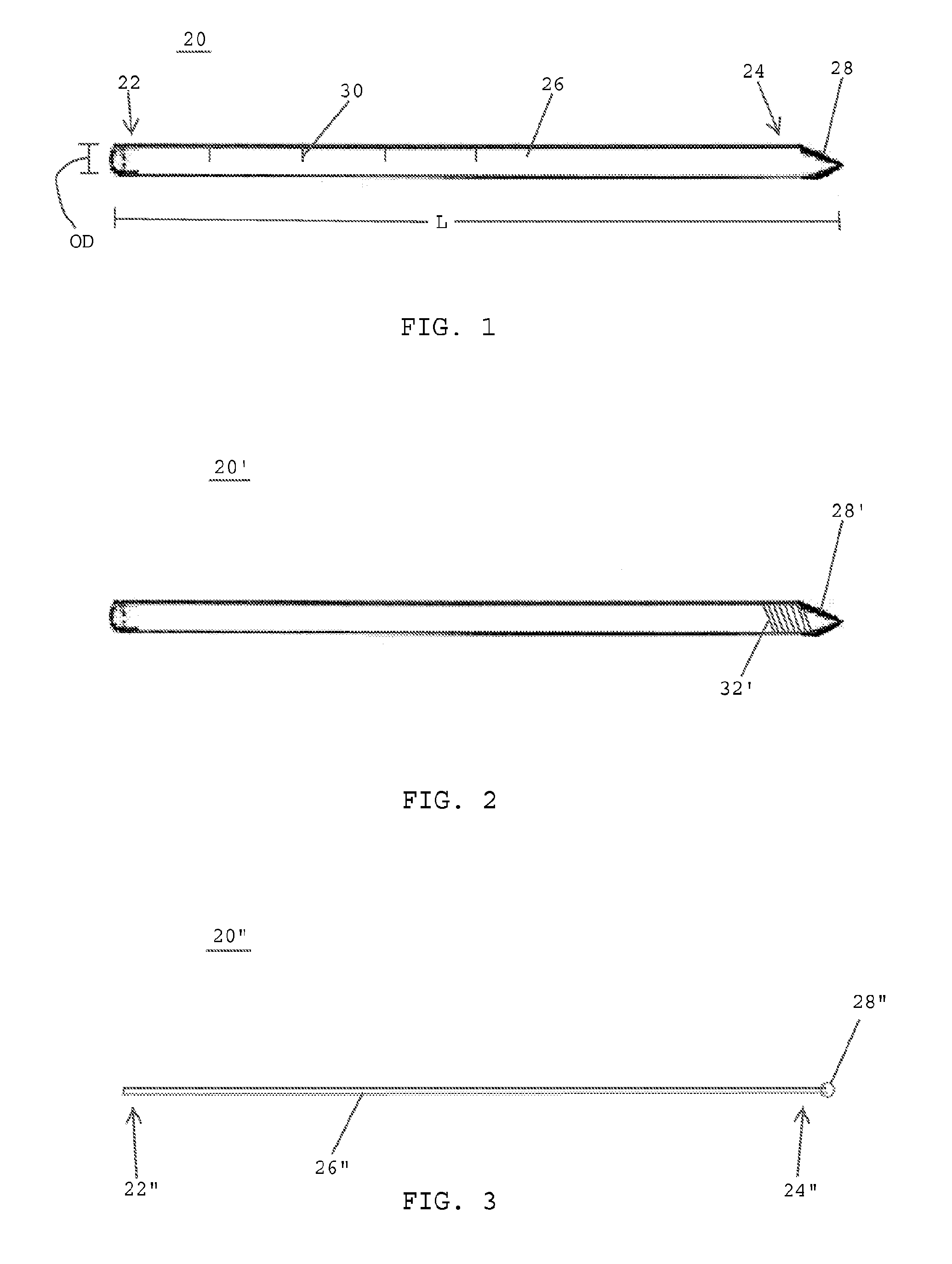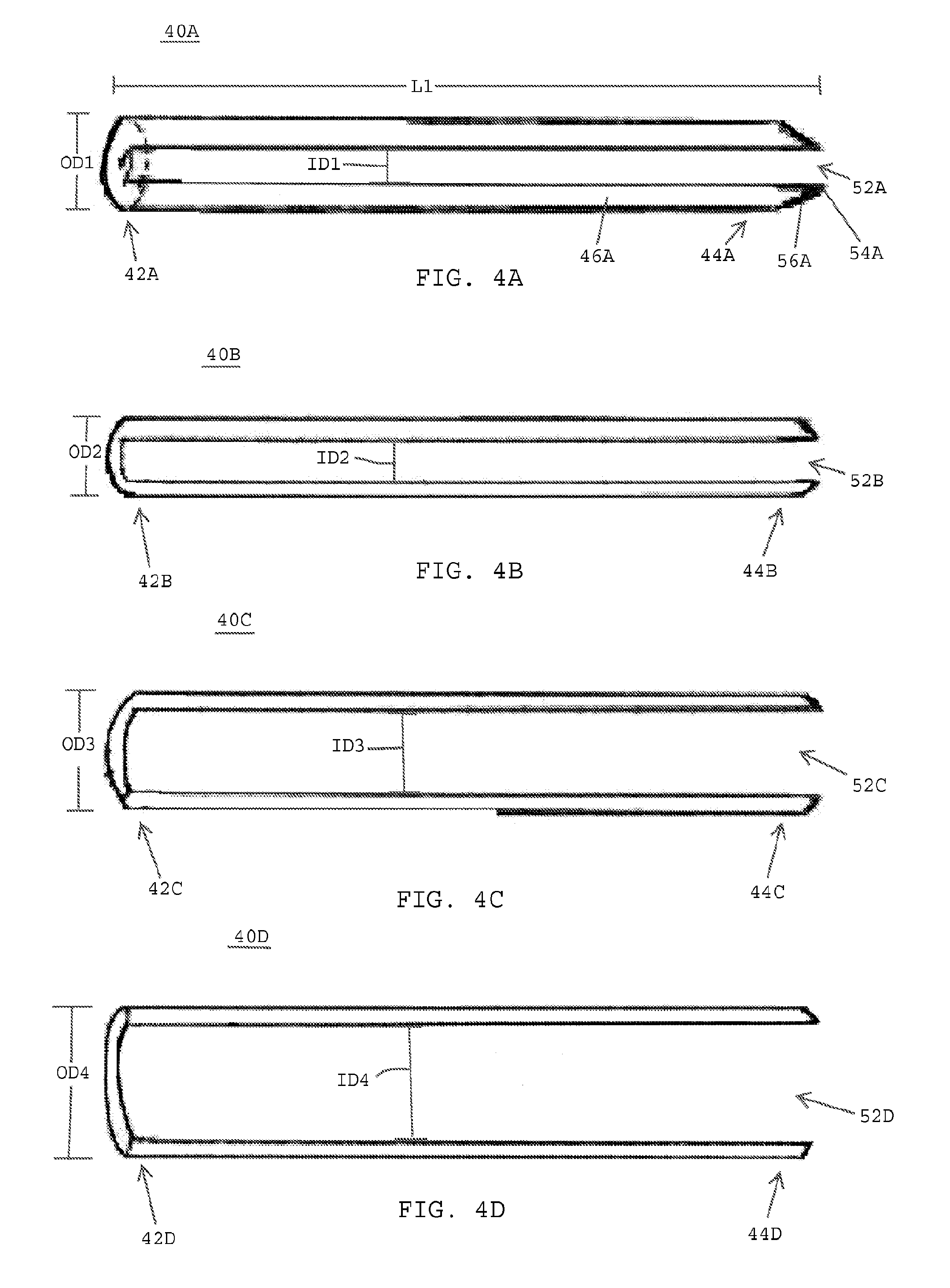Minimally invasive endoscopic systems for placing intramedullary nails and methods therefor
a technology of intramedullary nail and minimally invasive, applied in the field of systems, devices and methods for treating fractures, can solve the problems of reducing the risk of hardware failure, reducing the risk of post-operative wound drainage, osteomyelitis, sepsis, and death associated with wound drainage, and reducing the risk of post-operative wound infection. , the effect of reducing the risk of bleeding
- Summary
- Abstract
- Description
- Claims
- Application Information
AI Technical Summary
Benefits of technology
Problems solved by technology
Method used
Image
Examples
Embodiment Construction
[0044]Referring to FIG. 1, in one embodiment, an intramedullary nail placement system includes a guide wire 20 having a proximal end 22, a distal end 24, and an elongated shaft 26 that desirably extends between the proximal and distal ends. The elongated shaft 26 of the guide wire 20 is preferably smooth. The distal end 24 of the guide wire 20 desirably has a pointed tip 28 for passing through skin, soft tissue and bone. The pointed tip 28 may also function to hold the guide wire 20 in place after the distal end 24 has been inserted into bone.
[0045]In one embodiment, the guide wire 20 is preferably made of stainless steel. In one embodiment, the guide wire is made of a durable, biocompatible material. In one embodiment, the guide wire 20 has an outer diameter OD of approximately 3.0 mm and a length L of between about 32-150 cm. In one embodiment, the guide wire 20 preferably includes visual indicia 30 provided along the outer surface of the elongated shaft 26 to provide an indicatio...
PUM
 Login to View More
Login to View More Abstract
Description
Claims
Application Information
 Login to View More
Login to View More - R&D
- Intellectual Property
- Life Sciences
- Materials
- Tech Scout
- Unparalleled Data Quality
- Higher Quality Content
- 60% Fewer Hallucinations
Browse by: Latest US Patents, China's latest patents, Technical Efficacy Thesaurus, Application Domain, Technology Topic, Popular Technical Reports.
© 2025 PatSnap. All rights reserved.Legal|Privacy policy|Modern Slavery Act Transparency Statement|Sitemap|About US| Contact US: help@patsnap.com



